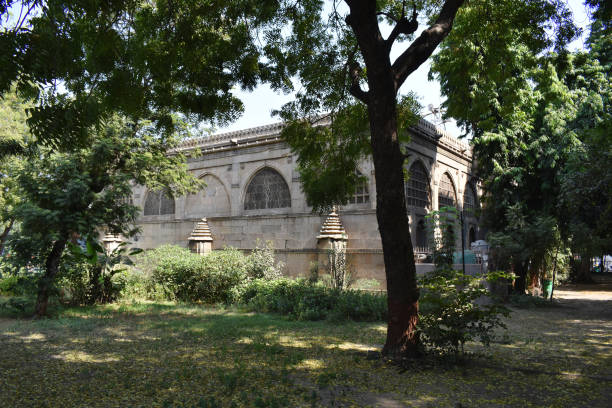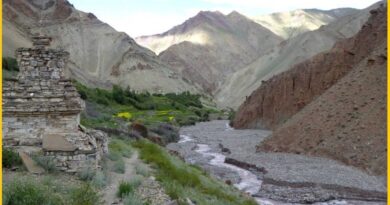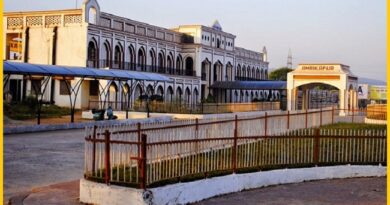Ahmedabad Weather- Stay Prepared for Every Season
Ahmedabad
Ahmedabad, situated in the western part of India, is the largest city in the state of Gujarat. It holds significant historical, cultural, and economic importance. Founded by Sultan Ahmed Shah in 1411 AD, Ahmedabad has a rich historical background. It served as the capital of the Gujarat Sultanate for centuries and later became an important center of trade and commerce under British rule.
Ahmedabad boasts a vibrant cultural scene, blending traditional Gujarati culture with modern influences. The city is known for its colorful festivals, diverse cuisine, folk art, music, and dance forms like Garba and Dandiya Raas. Ahmedabad is a thriving industrial and commercial hub, known for its textile industry, diamond cutting and polishing, pharmaceuticals, and information technology sectors. It’s home to many prominent companies and industrial zones. The city showcases a blend of architectural styles ranging from ancient Islamic structures to modern buildings. Iconic landmarks include the Sidi Saiyyed Mosque, Jama Masjid, Adalaj Stepwell, and contemporary structures like the Sabarmati Riverfront.
Ahmedabad Weather
The climate in Ahmedabad is extremely dry except for the monsoon months. The weather is hot and extremely dry from March to June. The average summer maximum is 39˚C and the average minimum is 24˚C. It was 41˚ C and 27˚ C respectively reported in the climatology of Ahmedabad based on the data from 1971 to 2010. The average maximum temperature from November to February is 30˚ C and the average minimum is 15˚C. The highest average rainfall was during July followed by August, September, June, and October.
Winter Season
The winter season in Ahmedabad weather starts in December and lasts up to February. Uttarayan is a festival of kites celebrated all over Gujarat on 14th January. Wind and temperature are two parameters that are important on this day because of the kites flying.

Temperature
The maximum temperature gradually falls throughout December, it falls from about 31˚C at the beginning of the month to around 27˚C toward the end of the month and remains around 27˚C till the 3rd week of January then starts rising till the end of the season. At the end of the season, it’s about 34˚C i.e. at the end of February.
Extreme temperature
The highest maximum temperatures recorded in Ahmedabad weather in this period were 35.6˚C, 34.8˚C, and 37.8˚C on 31st December 2015, 25th January 2017, and 24th February 2015. The lowest maximum temperatures recorded during the period were 19.0˚C, 22.5 ˚C, and 21.9˚C on 7th December 2017, 12th January 2014, and 9th February 2012 respectively.
The range of lowest minimum temperatures recorded in December is 7˚C to 12˚C, 6˚C to 11˚C in January and 5˚C to 13˚C in February. The lowest minimum temperatures recorded during the period were 7.4˚C on 15th December 2014, 6.6˚C on 17th January 2011, and 5.2˚C on 9th February 2012. The lowest minimum temperatures recorded were 3.6˚C on 27th December 1983, 3.3˚C on 10th January 1954, and 2.2˚C on 6th February 1920 are the all-time lowest minimum temperatures to date.
Also read- Mandvi Beach- A Picturesque Sandy Beach in Kutch Gujarat
Rainfall
Winter is not a rainy season for Ahmedabad weather. The Mean monthly rainfall during December, January, and February is 1.4mm, and 1.5mm 0mm respectively from 2010 to 2019. The probability of rainfall is almost zero for the whole season except for a few incidences
from 2010 to 2019.
Summer season
Summer season consists of three months March, April, and May. The season is characterized by dry and hot weather in Ahmedabad. Increasing insolation and high day temperatures with heat waves are the main features of the season.
Daily temperatures
In this season maximum and minimum temperatures keep on increasing. Normal maximum temperature increases by about 33˚C at the beginning of March and at the end of April it is about 41˚C and at the end of the season (Month of May) it is around 42˚C. Normal minimum temperatures also increase by about 16˚C at the beginning of the season and reach 28˚C at the end of the summer season.
Extreme Temperatures
The average highest maximum temperature for March, April, and May is 40˚C, 43˚C, and 45˚C respectively. The monthly range of highest and lowest maximum temperatures is highest in March which is about 10˚C. The lowest average minimum temperatures are 13˚C, 20˚C, and 24˚C for March, April, and May
respectively during the period 2010 to 2019. The lowest minimum temperature recorded was 9.4˚C on 2nd March 1982, 16.2˚C on 08th April 2017, and 19.4˚C on 27th May 1974. Those are the ever-lowest values till 2019. Minimum temperatures are highly variable in March and thus the difference between the highest and lowest minimum varies between 8˚C to 14˚C.
Rainfall
Summer season is generally dry over Ahmedabad where March is the driest month and May is the wettest month. The highest average rainfall is 2.16mm from 2000 to 2019. However, the highest-ever recorded 24-hour rainfalls were 19.2mm on 01st March 2015, 21.9mm on 27th April 1982, and 138.3mm on 09th May 1982 at Ahmedabad weather till 2019. The average number of days of rain occurrences is 0.3 days, 0.5 days, and 0.1 days in March, April, and May respectively.
Monsoon Season
The months of June, July, August, and September constitute the monsoon season. This is the main rainy season for most parts of India. Frequent rainfall, thunderstorms, and heavy rains are characteristic features of this season. Onset And Withdrawal Of Monsoon The Southwest monsoon sets in over Kerala around 1st June. It takes around 15 to 20 days to travel to Gujarat. The average onset date of SW monsoon over Ahmedabad weather is 21st June. The earliest date of onset monsoon over Ahmedabad is 7th June 2012. Before that, it was 10th June in 1989 and 1995. And the latest onset was 30th June in 2000. The earliest withdrawal was 15th September in 1983, 2003, 2004. The latest withdrawal was on 15th October 2013 before that it was 6th October 2010.
Rainfall
June to September is the Rainy season for Ahmedabad weather. Rain intensity increases from June till 2nd week of August and then decreases till the end of the season. For the period 2010 to 2019, daily normal rainfall was around 10 to 15mm. There was an increase in rainfall intensity from the last week of June till mid of August and a gradual decrease till the end of the season. July and August months experience most of the rainfall and they together contribute more than 70% rainfall to the season’s total rainfall. The probability increases from 10% to 70% from the 2nd week of June to the 2nd week of August and then decreases to 20% in
September. The average number of rainy days for June is 2.9 days, for July is 11 days, for August is 10.7 days, and for September is 7.3 days (from 2010 to 2019). The average number of days is 0.1 for June, 1.4 days for July, 0.9 days for August, and 0.3 days for September during the period 2010 to 2019.
Ahmedabad weather mainly receives rain in the Monsoon season and the rest of the months are either dry or have very little rainfall. It shows that in Ahmedabad most rain occurs in the Monsoon season. It is noticed that in the years 2011 and 2018 there was rainfall only in the Monsoon season and other months were dry. In the year 2012, The monsoon and annual rainfall difference is very low. The highest Monsoon and annual rainfall received in 2017 were 1146.7mm and 1160.9mm respectively (from 2010 to 2019) in Ahmedabad weather.
Temperature
The season begins with a warm day with a daily normal temperature of around 42˚C and it starts to fall as the season progresses. It is around 32˚C at the end of July. The normal maximum temperature at the end of the Season is around 33˚C. The minimum temperature also falls around 29˚C to 24˚C from the
start to the end of the season (June to July).
Places to visit in Ahmedabad
Ahmedabad, the largest city in the Indian state of Gujarat, is rich in culture, history, and architecture. Here are some places you might want to consider visiting in Ahmedabad.
Sabarmati Ashram
Sabarmati Ashram, also known as Gandhi Ashram, is a historic site located in Ahmedabad and is the best place to visit in Ahmedabad. It holds great significance in the Indian independence movement and is closely associated with Mahatma Gandhi, the leader of India’s non-violent struggle for independence from British rule. Sabarmati Ashram was established by Mahatma Gandhi in 1917, shortly after his return from South Africa. He chose this tranquil spot on the banks of the Sabarmati River as his residence and headquarters for his socio-political activities.
The ashram served as a center for Gandhiji’s experiments with truth, simplicity, and self-sufficiency. He advocated for principles such as Swadeshi (self-reliance), Satyagraha (nonviolent resistance), and Sarvodaya (welfare of all). Gandhi and his followers engaged in various constructive activities at Sabarmati Ashram, including spinning and weaving cloth (khadi), promoting basic education, fostering communal harmony, and advocating for social reforms.
Sabarmati Ashram became a symbol of the Indian freedom struggle and a center for organizing campaigns, movements, and protests against British colonial rule. It played a pivotal role in shaping the course of India’s independence movement. Visitors to Sabarmati Ashram can explore several attractions including Gandhi’s living quarters, the Hridaya Kunj (his cottage), the Vinoba-Mira Kutir (residence of Vinoba Bhave and Mira Ben), the Magan Niwas (Gandhi’s nephew’s residence), and the Gandhi Smarak Sangrahalaya (a museum documenting his life and teachings).
Sidi Saiyyed Mosque
The Sidi Saiyyed Mosque is a renowned mosque located in the heart of the city of Ahmedabad. It is known for its beautiful stone latticework, particularly the intricately carved jaalis (lattice screens) on its windows. The mosque was built in 1573 AD by Sidi Saiyyed, a slave of the Sultan of Gujarat at that time. It is believed that the mosque was constructed to serve as a symbolic representation of the Sultan’s authority.

The mosque is known for its exquisite architecture, with its most notable feature being the intricate jaalis or stone latticework on the windows. The most famous of these jaalis is the “Tree of Life” pattern, which depicts intertwining branches and foliage. The jaali screens of the Sidi Saiyyed Mosque are celebrated for their intricate craftsmanship and delicate patterns. The windows are made of intricately carved stone and are known for their fine detail and geometric designs.
The mosque features beautifully carved minarets and pillars adorned with ornate motifs and calligraphic inscriptions, adding to its architectural splendor. The mosque is considered a symbol of the rich architectural heritage of Gujarat and is a testament to the craftsmanship of the artisans of that era. The Sidi Saiyyed Mosque is an important cultural and historical landmark in Ahmedabad and is visited by tourists, scholars, and architecture enthusiasts from around the world.
Akshardham Temple
Akshardham Temple, also known as Swaminarayan Akshardham, is a magnificent Hindu temple complex located in Gandhinagar. The temple complex was inaugurated in 1992 by Pramukh Swami Maharaj, the spiritual leader of the Bochasanwasi Akshar Purushottam Swaminarayan Sanstha (BAPS), a Hindu denomination. It was built to honor Bhagwan Swaminarayan, the central figure of the Swaminarayan faith.
Akshardham Temple is renowned for its stunning architecture and intricate carvings. The temple complex follows the traditional architectural principles of Hindu temple design and features elements inspired by ancient Indian architecture. The centerpiece of the complex is the Akshardham Mandir, a massive temple dedicated to Bhagwan Swaminarayan. The mandir is adorned with intricately carved stone sculptures, pillars, and domes, showcasing the exquisite craftsmanship of skilled artisans.
In addition to the main temple, Akshardham Temple houses a sprawling cultural complex that includes exhibition halls, gardens, water fountains, and thematic attractions. These features showcase the rich cultural heritage of India and the teachings of Bhagwan Swaminarayan.
Adalaj Stepwell
The Adalaj Stepwell, also known as Adalaj ni Vav, is a stunningly intricate stepwell located in the village of Adalaj and is the place to visit in Ahmedabad. The stepwell was built in the late 15th century by Queen Rudabai, wife of the Vaghela ruler Veer Singh. It is an exemplary specimen of Indo-Islamic architecture and showcases exquisite craftsmanship.
Stepwells were traditional water storage and harvesting systems prevalent in arid regions of India. The Adalaj Stepwell served as a source of water, especially during the dry seasons, and also provided a place for social gatherings and religious rituals. The stepwell is intricately designed with multiple levels of steps leading down to the water level. The architecture is characterized by intricately carved pillars, arches, niches, and balconies adorned with motifs, sculptures, and geometric patterns.
The stepwell consists of five levels, each adorned with intricate carvings and ornamentation. The lower levels are cooler and provide relief from the scorching heat during summer. The stepwell is not only a utilitarian structure but also holds symbolic significance. It is believed to represent the union of life and death, with the water symbolizing life and the depths of the well representing the afterlife.

Kankaria Lake
Kankaria Lake is a prominent tourist destination located in the heart of Ahmedabad is the place to visit in Ahmedabad. Kankaria Lake was built in the 15th century by Sultan Qutb-ud-Din Ahmad Shah II, who was the ruler of the Gujarat Sultanate at that time. It was constructed as a water reservoir to fulfill the city’s water needs and to provide a recreational space for the citizens.
The lake is situated in the southeastern part of Ahmedabad and covers an area of about 34 hectares (84 acres). It is surrounded by lush greenery and offers a picturesque setting for visitors. Kankaria Lake is a popular recreational spot and offers a variety of attractions and activities for visitors of all ages. Some of the key attractions include- Nagina Wadi, Balvatika and Zoo
Science City
Science City, located in Ahmedabad, is an innovative science museum and educational complex that offers interactive exhibits, educational programs, and entertainment for visitors of all ages. Science City aims to promote scientific awareness, education, and curiosity among visitors through engaging and interactive exhibits and activities. It serves as a platform for learning and exploration in various fields of science and technology.
Science City comprises several indoor and outdoor exhibition galleries, demonstration areas, auditoriums, and theaters, covering a wide range of scientific disciplines including physics, chemistry, biology, space science, and environmental science. Science City features a diverse array of exhibits and attractions, including- the Hall of Science, Space and Astronomy Gallery, Life Science Park, Planet Earth Pavilion, and Energy Education Park.

Vastrapur Lake
Vastrapur Lake is a scenic man-made lake located in the western part of Ahmedabad and is a place to visit in Ahmedabad. Vastrapur Lake is situated in the Vastrapur neighborhood of Ahmedabad, near the Vastrapur area and the Gujarat University campus. It is easily accessible from various parts of the city. Vastrapur Lake was created as a part of the Sabarmati Riverfront Development Project, aimed at enhancing the city’s infrastructure and providing recreational spaces for residents and visitors.
The lake is surrounded by lush greenery, jogging tracks, and landscaped gardens, making it a popular spot for leisurely walks, jogging, picnics, and relaxation. Visitors can enjoy pedal boating and rowing on the lake, with boat rental facilities available near the lakefront. Boating offers a serene and peaceful experience, allowing visitors to enjoy the natural beauty of the surroundings.
Sarkhej Roza
Sarkhej Roza is an architectural complex located in the village of Makarba, near Ahmedabad. Sarkhej Roza was built during the 15th and 16th centuries as a mausoleum and mosque complex. It served as the spiritual center and retreat for Sultan Mahmud Begada, the ruler of Gujarat Sultanate. The architectural complex of Sarkhej Roza is renowned for its stunning Islamic architecture and intricate design elements. It showcases a blend of Hindu, Jain, and Islamic architectural styles, reflecting the syncretic culture of Gujarat.
Sarkhej Roza comprises several structures, including the tomb of Sultan Mahmud Begada, the mosque, the tombs of his queens, pavilions, courtyards, and water reservoirs. The complex is surrounded by beautifully landscaped gardens and water bodies, creating a serene atmosphere. One of the most striking features of Sarkhej Roza is its exquisite jali work, which adorns the windows, screens, and walls of the structures. The intricate stone lattice work allows light and air to filter through while creating beautiful patterns and designs.
Things to do in Ahmedabad
Ahmedabad offers a diverse range of activities and experiences for visitors. Here are some things you can do while exploring the city-
Explore Old Ahmedabad (Old City)
Wander through the narrow streets of the old city to experience the rich heritage, vibrant culture, and bustling markets. Don’t miss the Pols (traditional neighborhoods), which are known for their unique architecture and community living.
Attend the Gujarati Thali Dinner
Indulge in a traditional Gujarati Thali dinner, which offers a variety of vegetarian dishes representing the rich culinary heritage of Gujarat.
Take a Heritage Walk
Join a guided heritage walk to discover the historical landmarks, intricate architecture, and cultural sites scattered across the city, including temples, mosques, and step-wells.

Visit Street Food Markets
Ahmedabad is famous for its street food culture. Head to places like Manek Chowk and Law Garden to sample a variety of local delicacies, including chaat, pav bhaji, dhokla, khandvi, and more.
Shop at Local Markets
Explore vibrant markets like Lal Darwaja, Rani no Hajiro, and Dhalgarwad to shop for traditional textiles, handicrafts, jewelry, and souvenirs. Don’t forget to bargain for the best deals!
Take a Sunset Cruise on the Sabarmati River
Enjoy a leisurely boat ride on the Sabarmati River during sunset and admire the picturesque views of the city skyline.
Visit Museums and Galleries
Explore the rich cultural heritage of Gujarat by visiting museums like the Calico Museum of Textiles, Shreyas Folk Museum, and Sanskar Kendra Museum, which showcase artifacts, textiles, and artworks.
Attend Festivals and Events
Experience the vibrant festivals and cultural events that take place in Ahmedabad throughout the year, including the International Kite Festival, Navratri, Uttarayan (Makar Sankranti), and Rann Utsav.
How to Reach Ahmedabad
Sardar Vallabhbhai Patel International Airport serves Ahmedabad and is located about 9 kilometers from the city center. The airport is well-connected to major cities in India as well as international destinations. Domestic airlines such as IndiGo, SpiceJet, Air India, GoAir, and Vistara operate regular flights to and from Ahmedabad.
Ahmedabad Junction is the main railway station in the city and is well-connected to major cities across India. Several trains run daily between Ahmedabad and cities like Mumbai, Delhi, Jaipur, Bangalore, Kolkata, Chennai, and Hyderabad. You can check train schedules and book tickets online through the Indian Railways website or other authorized ticketing platforms.
Ahmedabad is connected to nearby cities and states by a network of national highways and state highways. You can travel to Ahmedabad by bus or car from cities like Mumbai, Pune, Surat, Vadodara, Udaipur, and Jaipur. The Gujarat State Road Transport Corporation (GSRTC) operates intercity and interstate bus services to and from Ahmedabad. Ahmedabad also has a metro rail system, which is operational on certain routes within the city. The metro system provides a convenient mode of transportation for commuters and travelers within Ahmedabad.



